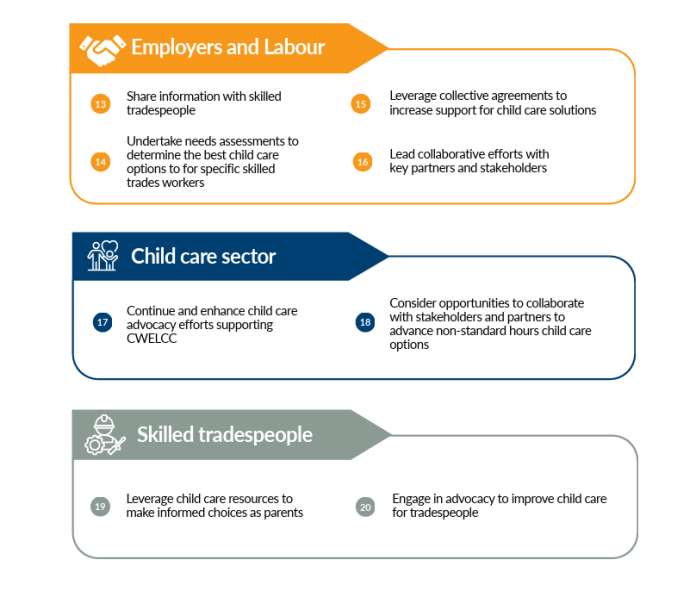Canadian Design and Construction Report staff writer
A new report from the Labourers’ International Union of North America (LiUNA) Local 506 says improving access to quality, affordable, and flexible care is essential to addressing Ontario’s skilled trades labour shortage and diversifying the construction workforce.
The LiUNA Local 506 Training Centre Construction and Child Care Research Initiative, supported by the Ontario Skills Development Fund, ran throughout 2024 and 2025 to examine one of the sector’s most persistent barriers, aligning care options with the realities of trades work schedules.
“As the need to diversify the construction workforce becomes increasingly important, more workers will require access to suitable care to join the industry,” the report states. “There are opportunities to address these barriers in collaboration with government and industry support.”
A 2022 Ontario Building and Construction Tradeswomen survey found 76 per cent of women in the building trades said construction hours make managing care difficult, and 52 per cent reported having to turn down work because of it.
The report, Building Up Child Care for Workers in the Skilled Trades, represents the culmination of the two-year initiative. Prepared by Medow Consulting, it drew on interviews, surveys and roundtables with more than 30 stakeholder organizations, including tradespeople, employers, labour officials, municipal representatives, policymakers, and care providers in Canada and the United States.
The study found that standard schedules rarely match construction work patterns. Early start times, unpredictable hours, shifting job sites, weather delays, and short-term contracts make consistent coverage difficult. Most facilities operate on a 9 a.m. to 5 p.m. schedule, creating a systemic mismatch for workers.
Twenty targeted recommendations are aimed at governments, unions, and employers, including extending hours at existing centres, supporting home-based providers in trades communities, developing on-site facilities at large projects, and leveraging union properties to expand access. A series of toolkits was also created to help government, employers, and workers navigate and improve the system.
Canada’s construction sector employs 1.6 million people and contributed 7.4 per cent of GDP in 2023. Ontario accounts for nearly 40 per cent of the workforce, yet 21 per cent of current workers are projected to retire within the next decade.
The study concludes that expanding access will help fill labour gaps and advance workforce diversity, making skilled trades more accessible to parents, particularly women and newcomers. While much of the data focuses on the Greater Toronto Area, the report’s findings are intended to serve as a model for Ontario and across Canada.
To read the report in its entirety click here.





